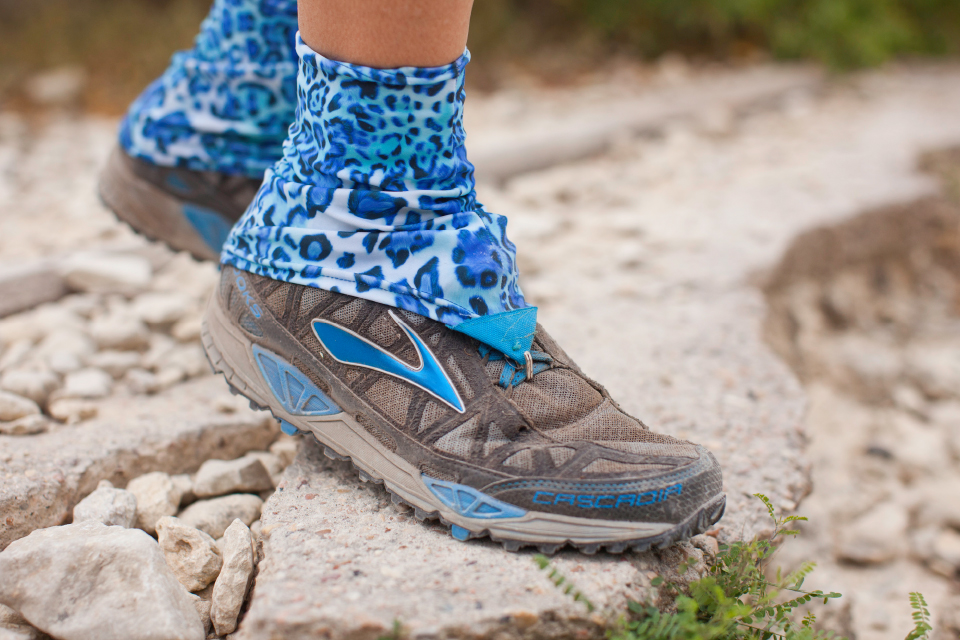Change of Pace

Ready to take your regular running routine off-road? If you (and your knees) are tired of pounding pavement, it’s time for a change of pace. Prepare to trade street crossings for water crossings and exchange the smell of exhaust for fresh air. After a quick wardrobe change, lesson in navigation, and a gentle push out of your comfort zone, you’ll be ready to blaze the trails in no time.
1. Intro to Trail Style

Get rid of anything white—and this doesn’t just apply to your shoes. This is dirt and mud you're running on; what do you think you'll be landing on when you trip? Spoiler alert: not your feet.
Bright colors are good. For when the search party needs to come find you.
Trail shoes are a real thing. They're not just road shoes that you took out onto the trail. Find a pair that is meant for the uneven terrain and designed with enough grip to get you up those boulders. Might I recommend the Skechers Ultra? They've come a long way since whatever it is that just popped into your head.
A hand-held water bottle or hydration back pack is key. The alternative is to drink out of the stream. Which is not actually an option at all, unless you're looking to experience the giardia.
Be prepared for that frustrated sigh when you discover that your GPS watch is projecting a significantly slower pace than you are used to seeing. Trails will typically slow down your speed by more than a minute or two per mile. The fewer the gadgets, the better. Sure, you can keep your GPS watch, but ditch the headphones, cell phone, heart rate monitor, pedometer. You don't have to post a picture or log every run. It still happened.
2. Navigation 101

It's fun to get lost in your thoughts out on the trail, but actually being lost isn't that great. First, have a plan. Know the path you'll be running and share it with someone kind enough to notice you're not around that evening and smart enough to send out a search party.
Easily find a nearby trail to suit your fancy, thanks to trailroots.com/maps. Study your trail. Identify the quick exit points in case you have to drag yourself and two broken ankles back to civilization. Take note of splits in the trail. If you're worried you'll miss that turn-off later, set up a cairn (miniature rock tower) to mark it. Know that cairns aren't resistant to a deer's hoof, a mountain biker's wheels, or even a heavy gust of wind, so take a look around and notice other indications that this is the correct trail to take you home.
If running solo isn't your thing, you're in good company. Join a trail training program that will push you to a faster pace, introduce you to new trails, and give you someone to compare muddy legs with over a breakfast taco. Rogue's Trail Running Crew and Trail Roots are two great training programs. Thinking on a more global scale? Rogue Expeditions will take you on a week-long unforgettable adventure to places like Morocco and Patagonia.
If you are ever truly lost and scared, you can head downhill, which will often take you to a stream or river. Follow this downstream for your best bet at finding help. But in most cases of running trails around Austin, you're just a fence jump away from a million dollar home.
3. Motivation
Be brave. Try a new section of trail you've never done. Join a group you've always been intimidated to run with. Running with faster people should motivate and inspire you. Be prepared to learn the trails by getting lost. Know your surroundings and run confidently. Make friends with the mud, wet socks, and sticker burs. Appreciate the sore legs that you earned. Just get out there and explore!






